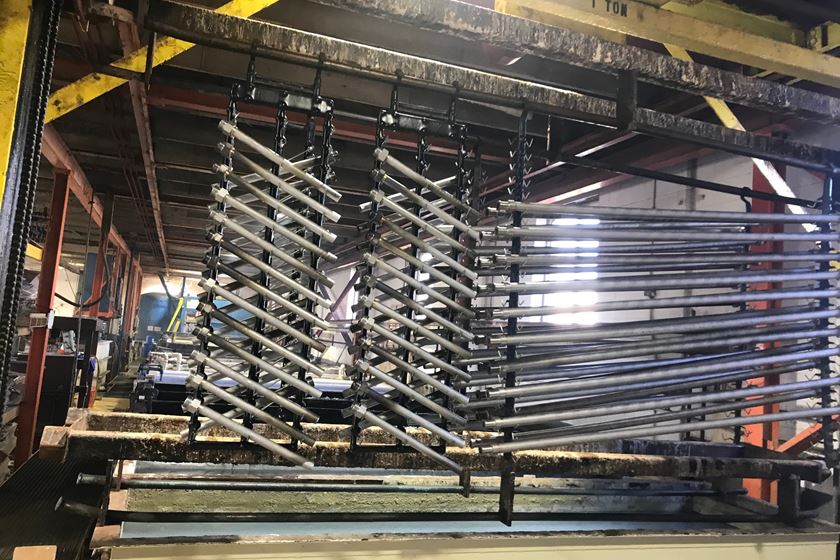EPA to List PFAS as RCRA Hazardous Constituents and Trigger Broader Corrective Action Authority
EPA announces that it intends to list four PFAS as hazardous constituents under RCRA and expand corrective action authority to cleanup releases of PFAS and other emerging contaminants.
#nasf #regulation
On October 26, 2021, the U.S. Environmental Protection Agency (EPA) responded to a petition submitted by the Governor of New Mexico by announcing that it would initiate two new rulemakings under the Resource Conservation and Recovery Act (RCRA) related to perfluoroalkyl and polyfluoroalkyl substances (“PFAS”). The Agency has not yet formally proposed either rule.
Rulemaking to Add Four PFAS Chemicals to the RCRA List of Hazardous Constituents
EPA announced it intends to add four PFAS chemicals: PFOA, PFOS, PFBS, and GenX to the list of RCRA “hazardous constituents” (40 C.F.R. Part 261, Appendix VIII). EPA has not indicated that it intends at this time to list the four chemicals as “hazardous wastes” that would be subject to the full range of regulatory controls under Subtitle C of RCRA. Listing the chemicals as hazardous constituents would, however, trigger cleanup authority under the RCRA “corrective action” program.
Under the RCRA corrective action program, permitted treatment, storage or disposal of hazardous waste must institute corrective action as necessary to protect human health and the environment for all releases of hazardous waste or constituents from any solid waste management unit at the facility. Accordingly, listing the PFAS chemicals as hazardous constituents would allow the use of the RCRA corrective action program to cleanup releases of PFAS.
Rulemaking to Broaden RCRA Corrective Action Authority
In its October 26, 2021 response to the Governor of New Mexico, EPA also announced that it would initiate a rulemaking to “clarify” that the corrective action program provides authority to require investigation and cleanup for wastes that meet the RCRA statutory definition of hazardous waste, rather than just wastes that meet the narrower regulatory definition that establishes the scope of EPA’s hazardous waste management standards under RCRA Subtitle C.
This would apparently amend the rules to apply the broader statutory definition for purposes of corrective action. If such a change were adopted, EPA could potentially require permitted facilities to undertake corrective action not only for releases of wastes that are listed as hazardous wastes or characteristically hazardous (as well as for releases of listed hazardous constituents, as discussed above), but also for releases of wastes covered by the broad statutory definition of hazardous waste. Accordingly, EPA could potentially address releases of all PFAS chemicals (not just the four listed as hazardous constituents) as well as other emerging contaminants of concern without going through the process of listing them as hazardous constituents and without expanding the hazardous waste listings or characteristics.
This potential rulemaking to broaden RCRA corrective action authority to cover PFAS and other emerging contaminants could have significant impacts for facilities where these chemicals were used. Regulatory agencies could have an additional enforcement tool to require the cleanup of PFAS that have been released to the environment. NASF will continue to monitor this rulemaking effort and provide updates to NASF members. If you have any questions or would like additional information on this issue, please contact Jeff Hannapel with NASF at jhannapel@thepolicygroup.com.
This update is courtesy of the National Association for Surface Finishing (NASF). For more information or to become a member, visit nasf.org.
RELATED CONTENT
-
Cyanide-Free Electroplating of Cu-Sn Alloys
This paper is a peer-reviewed and edited version of a presentation delivered at NASF SUR/FIN 2012 in Las Vegas, Nev., on June 13, 2012.
-
Evaluation of Atmospheric Corrosion on Electroplated Zinc and Zinc-Nickel Coatings by Electrical Resistance (ER) Monitoring
This paper is a peer-reviewed and edited version of a presentation delivered at NASF Sur/Fin 2013 in Rosemont, Ill., on June 12, 2013.
-
The Adhesion of Electrodeposits to Plastics
The 1966 Carl E. Huessner Gold Medal Award was given to Dr. Edward Saubestre and co-workers for Best Paper appearing in Plating in 1965, and their paper is republished here in a series on the AES/AESF/NASF Best Paper Awards. This paper is a comprehensive treatise on the Jacquet peel test, a primary test method for determining adhesion on plated plastics.















